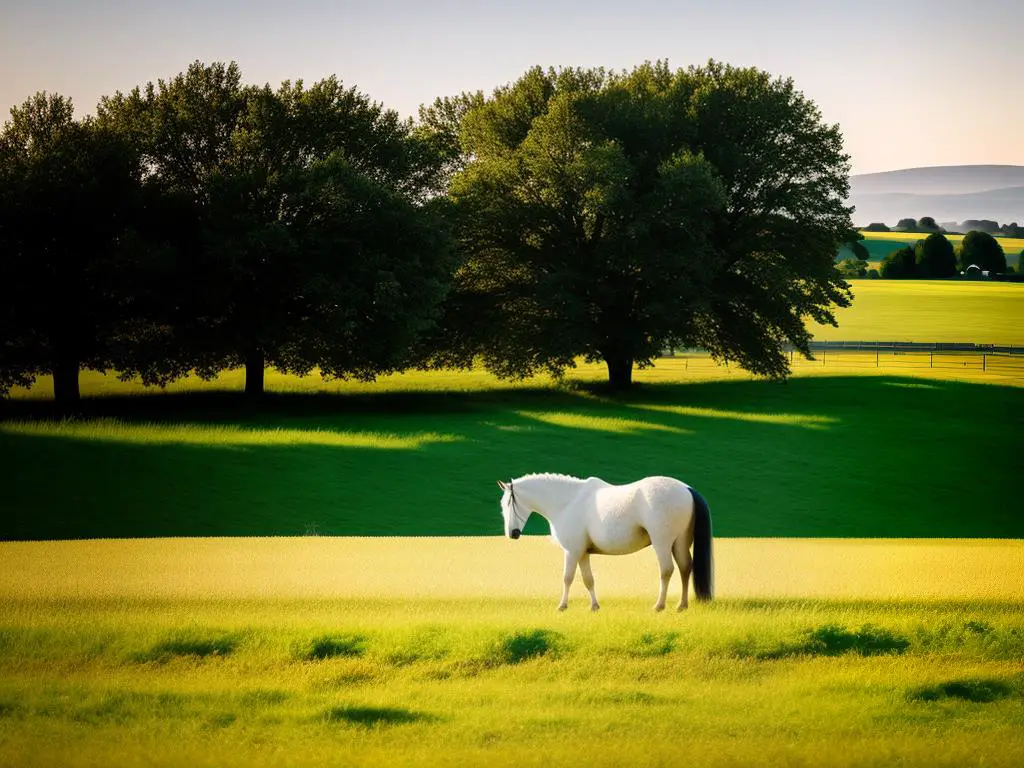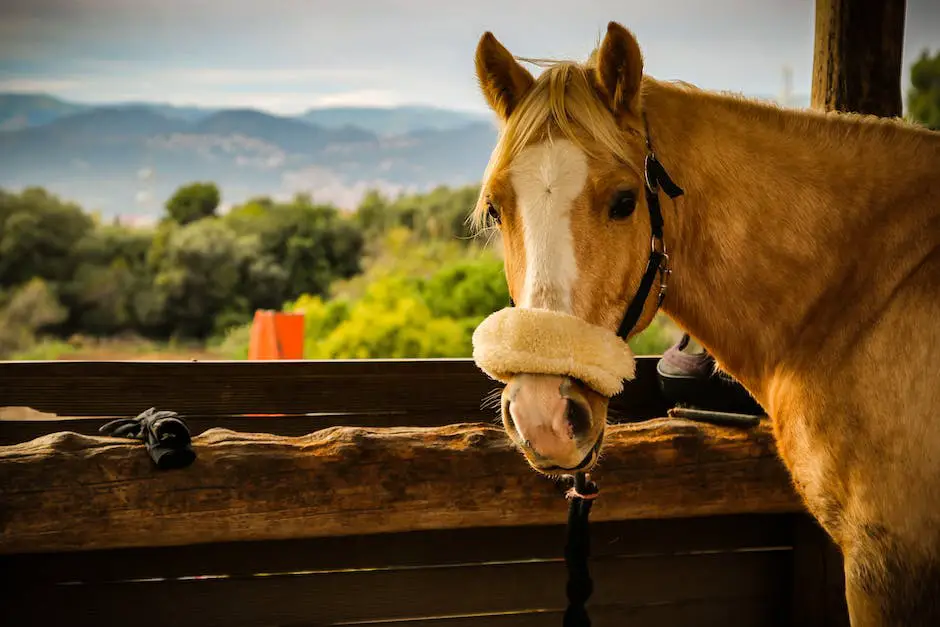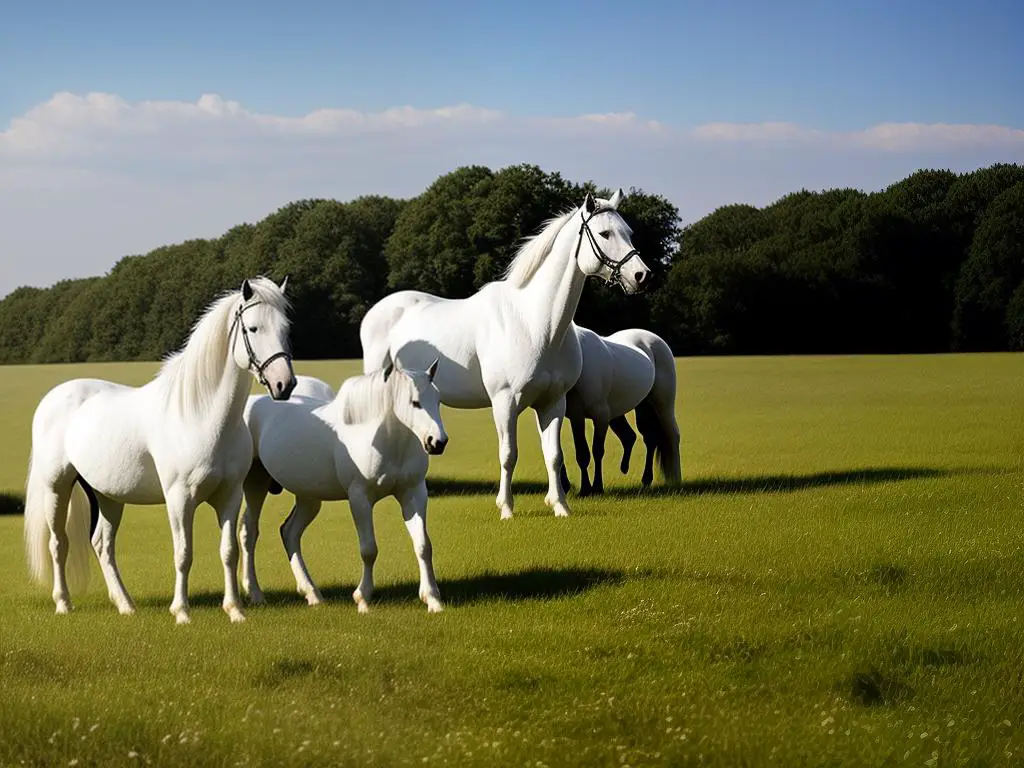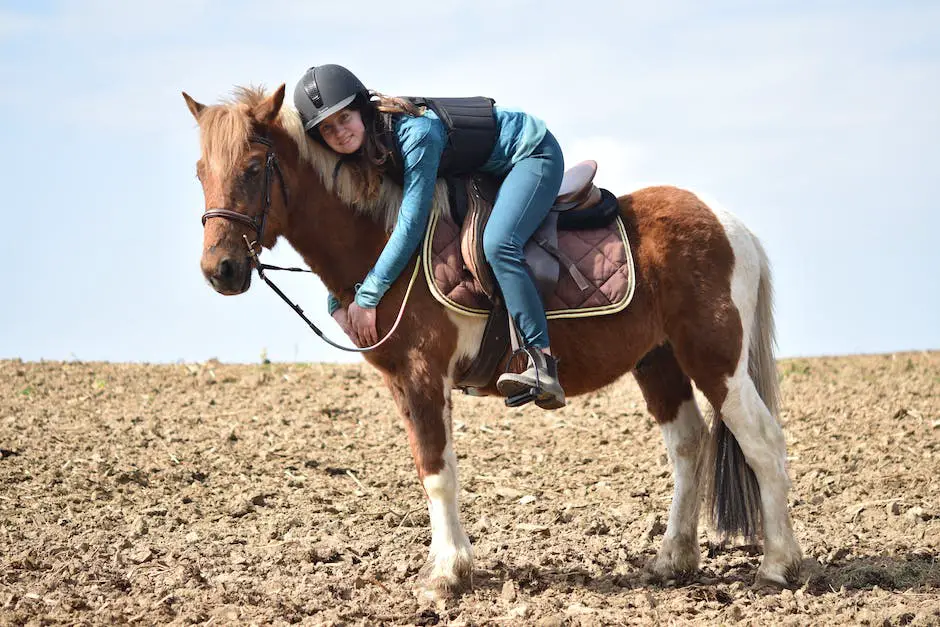Few creatures embody strength and elegance like the French draft horses. Interwoven into the rich tapestry of France’s cultural and historical spheres, these majestic animals have been symbols of resilience, endurance, and utility. From their distinguished roles on the battlefields to the plough-ridden furrows, the French draft horses have traversed a remarkable evolutionary journey. This exploration delves into the intriguing world of French draft horses, shedding light on their history, divergent characteristics and breeds, essential care and training regimen, and their poignant relevance in today’s society.
Table of Contents (Horspedia)
Brief History of French Draft Horses
Origins of French Draft Horses
French Draft Horses, also known as “heavy horses” due to their robust stature and impressive strength, originated in France and have a rich history steeped in the country’s heritage.
In the Middle Ages, these working animals were highly valued and considered indispensable due to their ability to pull weighty loads, work in fields, and even carry knights into battle. During the feudal period in France, heavy horses played a vital role in both the agriculture sector and warfare.
French Draft Horses in War
During war times, French Draft Horses were used extensively, owing to their strength and endurance. In the medieval era, they were frequently utilized as warhorses. The ability to carry heavily armored knights over long distances was made possible due to the physical attributes of these draft horses.
They continued to serve in various wars, including World War I and II. These horses worked tirelessly in adverse conditions to transport soldiers, pull heavy artillery and carry supplies. Their contribution to the war efforts should not be underappreciated, as they were instrumental in the logistics of managing the battlefields.
French Draft Horses in Agriculture
In the agriculture sector, French draft horses revolutionized the industry. The heavy labor that was previously done manually or using primitive tools was now performed by these workhorses that could plow fields, pull wagons and carts laden with produce, and perform a variety of other tasks. The increased productivity from these horses significantly boosted the French economy and helped to sustain its growth.
These horses were especially efficient in regions with rough or hilly terrains, as their powerful build allowed them to navigate such landscapes effortlessly. Over centuries, these draft horses have served as the backbone of French rural life and economy.
Historical Significance of French Draft Horses
French Draft Horses hold an exceptional place in France’s history. These powerful creatures have been essential to various sectors such as war, agriculture, and transportation. They have always served as a symbol of strength, endurance, and resilience, reflecting key aspects of the French character.
Fast forward to today, the admiration for French Draft Horses has crossed national borders. They’ve evolved from merely being working animals to riding and show horses, as well as cherished family pets. The enduring legacy of these majestic horses underscores their historical importance, not just in French culture, but also in the global context.

Characteristics and Varieties of French Draft Horses
Physical Attributes of French Draft Horses
Part of the appeal of French draft horses lies in their impressive physical characteristics. These towering horses stand between approximately 15.1 and 18.3 hands tall. They possess large, muscular bodies that epitomize strength and stamina. Their heads are distinct, characterized by a straight profile, large eyes that express emotions, and petite ears.
A glance at their bodies reveals broad chests and elongated, muscular backs. They also feature powerful hindquarters, a feature that enhances their pulling power, which is in high demand among draft horses. Additionally, these horses have robust legs, often short, but strong. Their feet are also remarkable, with large, robust hooves which contribute to their overall strength.
Coat Colors
Generally, French draft horses come in different coat colors. The Percheron mostly exhibits gray and black coats, whereas the Breton horse comes in various shades of chestnut. The Trait du Nord, another remarkable breed in the French draft horse category, typically has bay or chestnut coats.
Endurance and Strength
French draft horses are admired for their exceptional strength and endurance. Their muscular builds and athletic traits make them perfect for heavy work tasks. At the same time, they show a surprising level of agility for their size. This combination of strength, endurance, and nimbleness was vital during their early roles in war and farm work and continues to be appreciated in today’s competitions and work scenarios.
Percheron
The Percheron originates from the Perche province in western France. This breed is one of the most popular draft horses, particularly known for their intelligence and willingness to work. Recognized for their typically grey or black color, they are highly adaptable and can perform many tasks beyond farming and pulling heavy loads.
The Breton Horse
The Breton horse comes from Brittany, a region located in the northwest of France. They are robust and reliable, well-known for their work in farming, logging, and pulling artillery in wars. Distinguishing characteristics include their medium size, various chestnut coloring, strong neck, sloping shoulders and short legs that are muscular, making them exceptionally suitable for hard labor.
Trait du Nord: The Northern French Draft Horse
The Trait du Nord, a majestic draft horse breed, originates from the northern regions of France. Traditionally deployed in coal mines and heavy agricultural work, they are renowned for their incredible strength and endurance. Their distinctive features include a large build, strong chest muscles, broad-set eyes, and most commonly, bay or chestnut-colored coats.

Training and Caring for French Draft Horses
French Draft Horses: A Brief Overview
Also known as “Percherons” or “Cob Normands,” French Draft Horses are versatile equines cherished for their power, intellect, and amiable disposition. With roots tracing back to Western France, their muscular build is a stand-out trait. Their uses are diverse, extending to agriculture, forestry, and equestrian sports. Moreover, due to their impressive size and calm demeanor, they are a preferred choice for urban activities, such as pulling carriages and featuring in parades.
Training French Draft Horses
Training French Draft Horses requires an approach that is conducive to their temperament. They are intelligent, willing to work, and have a calm demeanor. Basic horse training principles apply, but what sets training these horses apart is their significant strength and size. The handler must be firm yet respectful, and consistently reinforce good behavior.
The training process begins with ground work, establishing trust between the handler and the horse. Socializing the horse with other animals and the wider environment is also beneficial. Since these horses were bred to work, teaching them pulling techniques is also a crucial part of training.
Caring for French Draft Horses
As for their care, French Draft Horses require a balanced diet to maintain their health and strength. They consume a diet primarily of hay or grass, and grain is often added, particularly during working periods. Providing clean, fresh water at all times is also necessary.
Their large size necessitates a substantial area for them to live, whether it is an ample stable or an outdoor paddock. They must have enough space to roam, and their areas need to be well-maintained to prevent injuries.
Regular exercise is vital as these animals are prone to obesity due to their large size and hearty appetites. They should also undergo routine veterinary check-ups and vaccinations to monitor their health condition and prevent diseases.
Just like other breeds, they require regular grooming to maintain their skin and coats. Due to their heavy work, their hooves should be checked and maintained frequently.
Temperament of French Draft Horses
French Draft Horses are renowned for their calm and willing nature, making them suitable for various tasks and environments. They are often friendly with an eagerness to please. These traits make them highly sought-after as working, competition, and companion animals. Despite their size, they are generally easy to manage due to their chill temperament.
French Draft Horses, when carefully trained and understood, can become invaluable assets. This is true whether they are used in work environments or enjoyed purely as companion animals. Their hardiness and adaptability are key factors contributing to their popularity among horse enthusiasts.

French Draft Horses in Modern Day
Adapting to the Modern Day: French Draft Horses
French draft horses, renowned for their strong build and placid nature, have transitioned from their historic roles in agriculture, warfare and heavy haulage to a varied portfolio of uses in the modern day. These majestic breeds are still highly sought after, from equestrian sports and tourism to sustainable agriculture and even therapeutic uses.
Equestrian Sports
Among the French draft horse breeds are the Percheron and the Boulonnais, horses that are often admired in competitive equestrian sports for their athleticism, strength, and agility. Despite their large size and powerful build, French draft horses are graceful movers, making them excellent competitors in dressage and show jumping. Additionally, these breeds often compete in draft horse exhibitions, where they showcase their skills in pulling heavy loads and doing tasks that have roots in their historical uses.
Tourism
French draft horses also play a significant role in tourism. In the rural regions of France, it is not uncommon to see these beautiful horses pulling carriages for tourists wanting to explore the countryside in a unique and eco-friendly mode of transport. These horses, with their calm disposition, are also used for horseback riding across the stunning French landscapes, offering a tranquil experience for riders of all levels.
Therapeutic Uses
In recent years, the therapeutic value of these gentle giants has been recognized. Equine therapy has been found to be beneficial in helping people cope with a range of psychological conditions, including anxiety, depression, and post-traumatic stress disorder. The connection between humans and horses, particularly with breeds as calm and patient as French drafts, can offer emotional support and contribute to improved mental health.
Conservation Efforts
Despite their many uses and the high regard they are held in, French draft horses are facing a mild threat of extinction. Genetic erosion caused by a decrease in their population has raised concerns, prompting numerous conservation efforts. Breeding programs are being carried out to maintain the purity and genetic diversity of the species and to prevent their numbers from dwindling any further.
In particular, the Trait du Nord, one of the endangered French draft breeds, has seen significant attention from conservation efforts. Support from private and public bodies has led to increased awareness about the plight of these horses and measures are being taken to ensure their survival.
Though the role of French draft horses has evolved over time, it is clear they remain integral to multiple sectors in modern society. From sports and leisure to therapeutic purposes and conservation, these powerful creatures continue to impact our world, symbolizing resilience, strength, and beauty.

On this journey of exploration, we have discovered the intriguing tales of French draft horses, their distinct strengths, captivating varieties, and the extraordinary care they command. We learned how they have walked in unison with mankind, evolved in the face of adversity, and adapted to modern roles in sports, tourism, therapy, and beyond. But as we marvel at their legacy and bask in their magnificent allure, a sobering reality emerges. These incredible breeds face the peril of extinction. Hence, while we continue to benefit from their strength and grace, it’s incumbent upon us to play a proactive role in their conservation. Only then can future generations appreciate the splendid saga of the French draft horses- not just from the annals of history, but in the pulsating presence of these living legends.
